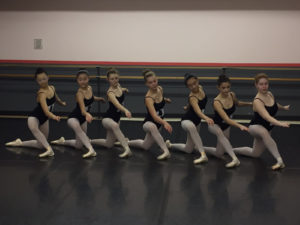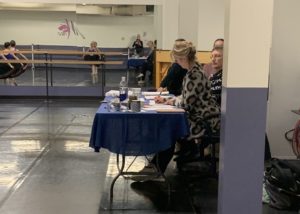Vaganova Ballet
Vaganova Ballet
What is Vaganova Ballet technique?
People often ask about Vaganova Ballet Technique and training; what it is exactly that makes it unique. Vaganova training is the purest form of teaching classical ballet, it is a thorough and methodical technique which allows the dancer to learn the proper use of muscles to move with control, strength, and grace without introducing tension or overuse of the wrong muscles.
Vaganova Ballet Technique was developed by Agrippina Vaganova (1879-1951) a distinguished Russian ballet dancer, choreographer, and teacher. She danced professionally with the Mariinsky ballet in St. Petersburg. She became known as the ‘Queen of Variations’ for her brilliant solos. As a dancer, she was extremely self-critical and aware of the inadequacies of her own technique. When she retired from dancing to become a teacher, she became more and more conscious of her desire to investigate the “science of ballet,” to find effective means of training classical dancers. Through studying the French, Italian, Danish and Russian methods, Vaganova designed a training method and began to produce a few dancers. These dancers at the age of 17 were catching the attention of the critics who were astonished by the rich orchestration of their movements, brilliance of their turns, and the unusual expressiveness of their arms. Gradually as more dancers were produced through Vaganova technique; this, in turn, affected the performance quality of the classical ballets such as Swan Lake and Esmerelda. The performance style of the dancer was strengthened and polished, from the girls in the corps de ballet to the leading ballerinas. Something they had in common was their manner of execution, a single style, a single dance ‘handwriting’ which manifests itself clearly in their harmonious plasticity of movement, the expressiveness of their arms, in the suppleness yet at the same time the iron aplomb of the body, and the noble and natural placement of the head. Vaganova’s method also influenced the development of the male dancer. ‘Helping them find the iron aplomb and stability that enabled them to find support in their body to provide the strength for turns and jumps’. These are the distinctive traits of the Vaganova technique.
Some key techniques Vaganova incorporated into her teaching method are:
- Special attention to epaulement (turning of the shoulders and upper body)
- Correct training of the arms (port de bras), fluidity, placement, coordination with the head and all movements
- Precise coordination of the whole body, working as one unit
- Unique sense of musicality (Russian-style pianist class accompanist )
Vaganova’s system aimed at teaching students to “dance with the whole body”. The systematic design of the classes carefully teaches the technique without room for error or bad habits to develop. The exercises naturally progress and are easily executed by teaching the correct muscles to respond to the movement. The technique naturally allows the dancer to progress to the next level of movement easily and free of tension or lack of control. At Marr-Mac we have customized this teaching syllabus to suit the serious dancer who initially studies ballet twice a week, progressing to 3 classes/week, then 4 or 5. The Syllabus moves at an appropriate pace to carefully train the young dancer which compliments their age and rate of growth, so by the age of 17, the dancer is properly equipped to go onto further pre-professional study.
Ballet is the basis from which all other dance forms are fed
Ballet teaches body awareness, posture, and control of all muscle groups. It encourages focus and discipline of the mind and body in order to coordinate several movements, or to maintain stillness and grace.
Teachers at Marr-Mac have trained to teach the Russian Vaganova technique in all levels of Ballet. Marr-Mac brings guest Vaganova experts to the studio annually to work with the teachers and the students. Our teachers have traveled to Montreal and St. Petersburg, Russia, with the Vaganova Dance Society to take courses in this technique.
For more information about Agrippina Vaganova and the Vaganova Technique visit
Quotes and excerpts taken from Basic Principles of Classical Ballet by Agrippina Vaganova
Ballet Evaluations
Annual Vaganova Evaluations are held through the Vaganova Dance Society including classical & character technique. Dancers in all VB (Vaganova Ballet) levels 1-6 are entered into these evaluations in the Spring. As well dancers in VPrep (Vaganova Prepatory) are entered into Pre-Junior level evaluations.
The evaluations are held in the true Vaganova format whereby the teacher prepares the syllabus for the evaluation and presents the work with her students. Pointe work is included in Junior 3 level and up. Dancers receive a written report with comments including feedback to further perfect their Vaganova style and technique.
2 Evaluators are chosen to sit in on the session who have been trained by a certified Vaganova teacher in this method.
Evaluation levels:
- Pre-Junior Levels 1 & 2 ages 7-9 yrs.
- Junior 1, 2, 3, Elementary 1-4, Intermediate 1- 4






Each section is given a mark out of 5 points with 5 being excellent in all placement and musicality.





The marking is as follows:
- 1/5 Approaching standard
- 2/5 Standard
- 3/5 Good
- 4/5 Very good
- 5/5 Excellent
Each dancer receives a report highlighting their strengths and areas which need attention. This assists the dancer in focusing their training as they continue with ballet. Dancers also receive a certificate from the Society showing the completion of the level entered.


Online Registration & Parent Portal
Registration
Parent Portal









